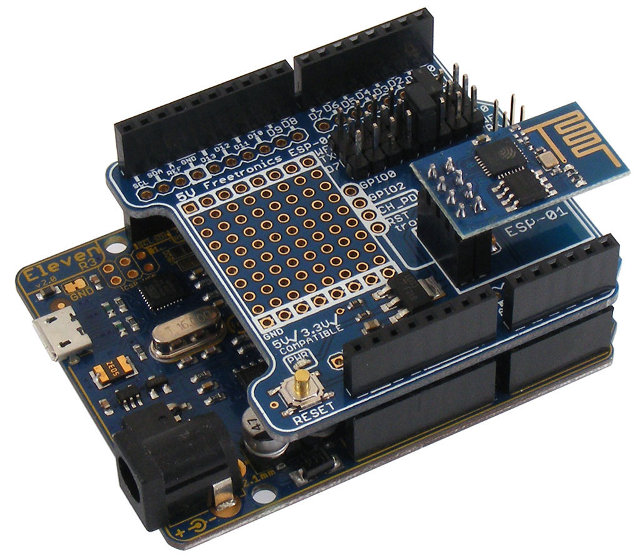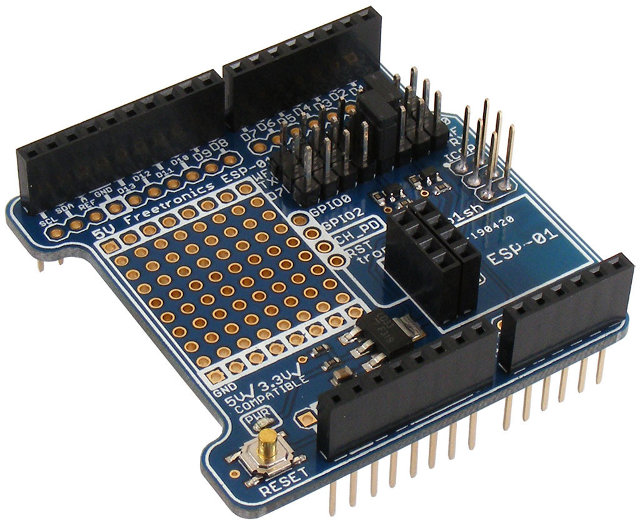ESP8622 has drastically brought down the price of adding Wi-Fi to MCU boards such as Arduino UNO, but you need to add some cables, and take care of 3.3V to 5V conversion for the UART pins either with a divider made of 2 resistors, or a FET level shifter, and you may not be able to access all I/O of ESP8622 on the popular ESP-01 version of the module. For a neater solution, Freetronics had designed ESP-01 WiFi Module Shield that takes care of all these small issues.
- 3.3V regulator dedicated to the module
- Logic level shifters on TX/RX lines: compatible with both 3.3V and 5V Arduino models
- Selectable TX/RX pins: use D0/D1 for hardware serial, or D2 – D7 for software serial
- CH_PD pin on ESP-01 module pre-biased for correct operation mode
- Extra ESP-01 pins broken out for your own connections
- Prototyping area with 5V and GND rails
- All Arduino headers broken out for easy connections
- Stacking R3-style Arduino headers including the ICSP header

Eagle schematics and PCB layout are available on github under TAPR Open Hardware License.
The company sells the shield (without ESP8622 ESP-01) for $10.94 US (SKU: ESP1SH).

Jean-Luc started CNX Software in 2010 as a part-time endeavor, before quitting his job as a software engineering manager, and starting to write daily news, and reviews full time later in 2011.
Support CNX Software! Donate via cryptocurrencies, become a Patron on Patreon, or purchase goods on Amazon or Aliexpress





